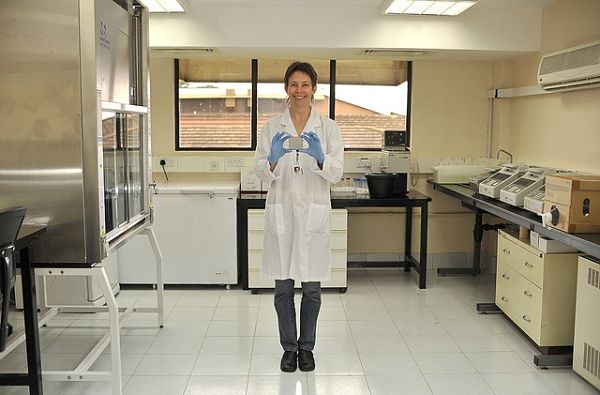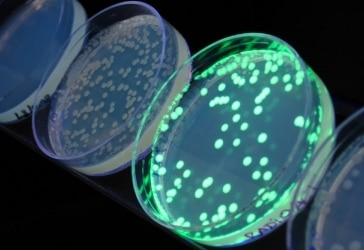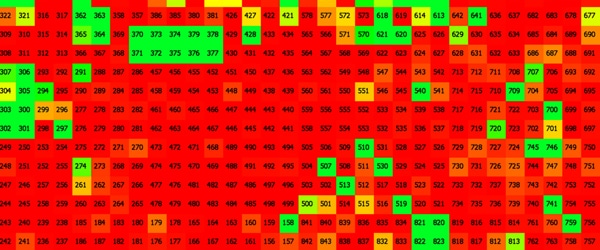How to Make the Perfect Agar Plate Every Time
Agar plates are the foundation of many experiments. Make sure your plates are perfect every time with these 8 tips and start your experiment ready for success!
Join Us
Sign up for our feature-packed newsletter today to ensure you get the latest expert help and advice to level up your lab work.

Agar plates are the foundation of many experiments. Make sure your plates are perfect every time with these 8 tips and start your experiment ready for success!

Need to get a handle on the fundamental differences between HPLC and GC to pick one for your studies? Here’s a quick explainer!

This is the first installment in the DNA microarray series where I will introduce the technology and explain the basics.

Restriction digests are the cornerstone of many techniques. Here are some great tips on setting up and troubleshooting them.

Ligation independent cloning (LIC) is an easy and effective method to ensure successful cloning, all without the need for ligation. As easy as the technique is, designing primers can be a bit tricky. In this article, we will present a quick overview on primer design for ligation independent cloning.

I have worked in flow cytometry for a number of years. I’m still annoyed that many myths and imprecisions are perpetrated and perpetuated. Here is my non-exhaustive list of cytometry-related beliefs that send flow cytometrists screaming from the room or at least, being English, make me tut sadly. Forward Scatter Equals Cell Size No No…

Do you use pre-packed Superdex 75 or Superdex 200 columns for gel filtration chromatography? Ever wonder if other media could better address your purification needs? Look no further. Your quest ends here! But if you’re looking for information on gel filtration principles, check out this earlier article. Choosing a Column for your Gel Filtration Experiment…

This is the first in a three-part series on the transformation of E.coli. By the end of this, you should be an expert on E.coli transformation and on which strains to choose for different applications. If you’re already an expert, I hope it’ll be an enjoyable refresher for you. In either case, please comment below…

Western blotting uses electrophoresis and antibody-epitope affinity to give a semi-quantitative and (theoretically) clear measure of protein abundance. It’s a long procedure, filled with many steps—and even more room for error. Learning to troubleshoot certain problems is incredibly important for continued success with this technique. So what do you do when your final imaged product…

Does your lab have a closet full of white elephants; once expensive instruments that are no longer fit for purpose, or have broken down? In many cases, all of that wasted money and resource could have been saved if the buyers had made smart choices about matching the instrument more closely to their needs. A…

Formalin fixed paraffin embedded (FFPE) tissues are valuable samples that typically come from human specimens collected for examination of the histology of biopsies for the detection of cancer. But each sample contains much more information just waiting to be unlocked. Despite the tiny sample size, DNA can be extracted from the tissue sections and used…

Even in the most basic applications, fluorescence microscopy can be a very powerful technique. Simply put, the ability to actually see the biology you are interested in cannot be matched in directness. Often, the aim of fluorescence microscopy is to observe the effect of an experimental manipulation. Ultimately, you would like to know that the…

“It didn’t WORK!” The panic was tangible. Anyone who performs PCR on a regular basis is used to the ups and downs involved, but it occurred to me that this might be the first time in the student’s academic life where he had actually failed at something.

Retroviral transduction is becoming a popular choice for gene delivery into mammalian cells and has multiple advantages over other techniques. If you decide to start work on this useful technique, here is how you can go about it: Step 0: Obtain permission First and foremost, do you have the permission, authorization, and training to work…

In the previous installment of this series on western blotting, we addressed potential sources of error when your final product is completely bare. But alternatively, what do you do when too much background is the problem? You may have beautiful bands of interest—but if there is a bunch of non-specific binding, your quantification and data…
Want to measure how much mRNA you have in a particular sample? Easy! Make some cDNA, add some fluorescent DNA-intercalating dye, pop it into a quantitative real-time PCR (qRT-PCR) machine and Bob’s your uncle! You have your result! Easy right…? Not so fast. As with any scientific assay, qRT-PCR requires some optimization. First, you need…

Every protocol for single cell PCR can be broken down into two steps. In the first step, the cells are isolated by micromanipulation, laser capture microdissection, flow cytometry, or by direct micropipetting. Next, the genetic material is processed by PCR to amplify your sequence of interest. Here, we’ll go through the different options for isolating…

As researchers, we are constantly on the lookout for new and improved ways to analyze, detect and quantify our favorite protein or gene. Luckily, we don’t always need to reinvent the wheel! PCR-ELISA is a good example of where two commonly used techniques have been merged together to create a very powerful analytical tool. What…

The completion of the Human Genome Project in 2003 ushered in a new era of rapid, affordable, and accurate genome analysis—called Next Generation Sequencing (NGS). NGS builds upon “first generation sequencing” technologies to yield accurate and cost-effective sequencing results. Fred Sanger sequenced the first whole DNA genome, the virus phage ?X174, in 1977. In that…

What do these three seemingly disparate studies have in common? After publication, the high-profile findings in each one were questioned due to the presence of batch effects. Batch effects are ever-present and insidious in science, so as researchers we need to always be on guard against them. Keep reading for a run-down of how they…

MIQE what’s that? When writing dPCR materials and methods for a paper have you ever pondered what information you should include? This is where the MIQE guidelines will really help. Guidelines for minimum information required for publication of a digital PCR (dPCR) experiment were published by JF Huggett et al. in 2013. These were a…

The wide range of applications of PCR has led to an ever-growing list of variants of the technique. While some are optimizations to suit specific requirements and are very similar to basic PCR, others completely turn the technique on its head to formulate novel creative applications in various fields. This article lists some variants of…

A wide variety of enzymes are available for PCR and RT-PCR and the optimal choice depends on a range of factors specific to your experiment. Some of these factors will now be explored to help you to make the most suitable and cost effective choices when ordering. PCR Type and Other Factors to Consider First,…

Stimulation of cells/tissue with a given stimulus (e.g., a cytokine) is a common experimental setup in any cell biology lab. The cellular response to the external stimulus e.g., the activation/deactivation of intracellular signaling pathways and/or the secretion of proteins is often the research goal, and there are a number of different methods that you can use to analyze such…

Bisulfite pyrosequencing is becoming a routine technique in molecular biology labs as a method to precisely measure DNA methylation levels right down to the single base. The technique allows for detailed and high resolution analysis of DNA methylation at specific genomic regions. How to detect the 5th base? Methylation of any of the four nucleotides…

You’re a senior grad student or postdoc, and you’ve done more PCRs than you can count. A new student has joined your lab, and you’ve been charged with training them on PCR. You don’t want to lead him/her astray, but it’s hard to remember the parts that you struggled with in your early days. This…

For those of us who work with Mus musculus or Homo sapiens, to name a couple of species, a few clicks on UCSC Genome Bioinformatics Site or Ensembl gets you the full and precise DNA sequence for any annotated gene in the genome. This luxury is not in place for all species however; many of…

As part of my job ensuring plasmid quality at Addgene, I analyze 50-100 sequencing reactions a week. So I have developed some good habits that I wanted to pass on to you to make sure you are getting the most out of the data you get back from your sequencing runs. The most important of…

The importance of epigenetics in biology is increasingly acknowledged (if you’re not convinced yet, read my crash course). One commonly studied epigenetic mark is CpG methylation: cytosines that are directly followed by a guanine nucleotide (indicated by CpG), can be methylated, unlike non-CpG Cs. Since attachment of a methyl group to a cytosine can affect…

If you purify proteins expressed in E. coli, then you’re probably familiar with this scenario: you come in bright and early in the morning and inoculate your large flasks of media with the overnight culture, start shaking them at 37 °C, and now you wait. And watch. And wait some more. You can’t venture far,…
CIP has been around for a while, but there is a better alternative.
Transfection of eukaryotic cells is a routine but sometimes tricky procedure. There are several transfection reagents available on the market, but sometimes the old methods are the best. I find that the simplest, fastest and cheapest transfection method for eukaryotic cells is calcium phosphate mediated transfection (1). It’s main advantage is that, since Ca2+ is…

Heat maps are a useful way to represent certain types of data; the data are colored by coloring according to the values in them, (e.g. red for high values, yellow for medium and green for low values), providing a powerful visual representation of a data set. This allows you to quickly see results from DNA…

Whether you need to get your plasmid DNA to a lab on the other side of the world, or a few hundred miles down the road, it’s important to make sure your precious sample gets there, it is not degraded, and you don’t end up in jail. Here’s the Bitesize guide on how to send…
A while back I wrote a post on a T4 DNA polymerase dependent ligation independent cloning method. In the comments, Max asked if anyone had a protocol. Since there does not appear to be a simplified protocol available on the web, I thought I would post mine for reference. It is adapted from a 2006…

Of all the competent E. coli cell strains available (including both chemically competent or electrocompetent E. coli), which one should you choose? The choice of strain to use in a given experiment is determined in large part by the nature of the experiment and the set of traits that best fit it. In this article…

Buying competent cells from commercial suppliers is convenient, provides a guarantee of quality, and gives access to strains with a variety of in-built traits that assist with things like maintenance of plasmid integrity (more on these traits later). However, this can be an expensive business. Alternatively, competent cells of any strain, including the specially-constructed commercial…

The eBook with top tips from our Researcher community.